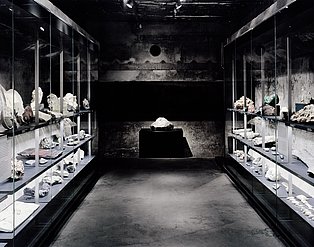
The geological collection with its approximately 400.000 objects is not only one of the Ruhr Museum's largest and most important, but also one of its oldest. Even at the time of the museum's foundation and in its early days, objects from the history of the earth played an important role. The collection had important curators and supporters, including Friedrich Alfred Krupp. It grew and was able to compensate for major losses during the war, and over the decades it integrated such important independent collections as the Krupp, Hilpert or, most recently, the Wuppertal Fuhlrott Collection.
This may hardly come as a surprise in a region like the Ruhr, which is so closely linked to its geological history and was dependent on its mineral resources for over two centuries. In the course of these countless expeditions into the earth, which led more than a thousand metres into the depths, and the enormous earth movements, which not only affected mining but also numerous infrastructure measures such as the construction of the canal and later the underground railway, countless geological objects saw the light of day and ended up in the collection of the Ruhr Museum.
But the collection is by no means limited to regional geological history; on the contrary, it is one of the museum's most international. Comparative pieces on a supra-regional, even global scale stimulated the museum scientists and collectors concerned with geology and developed the geological collection of the Ruhr Museum over a hundred years into a collection of international significance.
Part of the Geological Collection can be seen in the Ruhr Museum's Permanent Exhibition.
Large parts of the Geological Collection can now be seen in the Schaudepot as part of a guided tour.